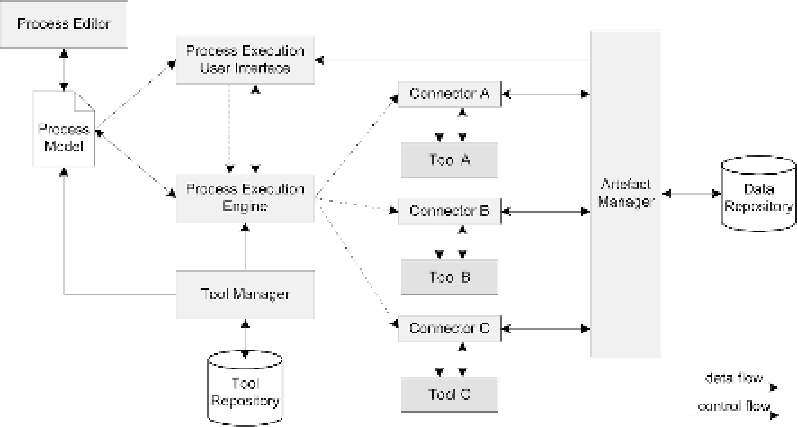Information Technology Reference
In-Depth Information
classes that provide homogeneous programming interface and hide the het-
erogeneity of the tools. Connectors shall be registered to the
Tool Manager
which composes a runtime
Repository
and makes accessible the tools and
their services.
Data Management.
During development another important part is the data
on which the different tools are operating. These can come from multiple
sources: e.g., from local or remote file systems, from databases, or from ver-
sion handling repositories. The
Artefact Manager
provides data management
related services to other components of the framework. It is composed of a
general component and multiple repository specific data connectors. A uni-
form address structure is used to address the data in different repositories.
Process Modeling. Process Models
are composed of services and related data:
it contains the information about what is done on which artefact and with
which tool. Both control flow and data flow appears in the model. The control
flow determines the sequence of tasks, while the data flow determines the
relation between tools and data.
First, a platform independent process model is created which is indepen-
dent of the execution environment. This contains the information
“what to
do”
. If an execution engine is selected it shall be transformed to the format
needed by the engine. This platform specific model also includes the infor-
mation
“how to do”
.
Process Execution.
The
Process Execution User Interface
canbeusedtode-
ploy the platform specific process models to the
Process Execution Engine
,
and to start and trace the execution of these. When execution is initiated (i)
Fig. 1. Framework architecture

